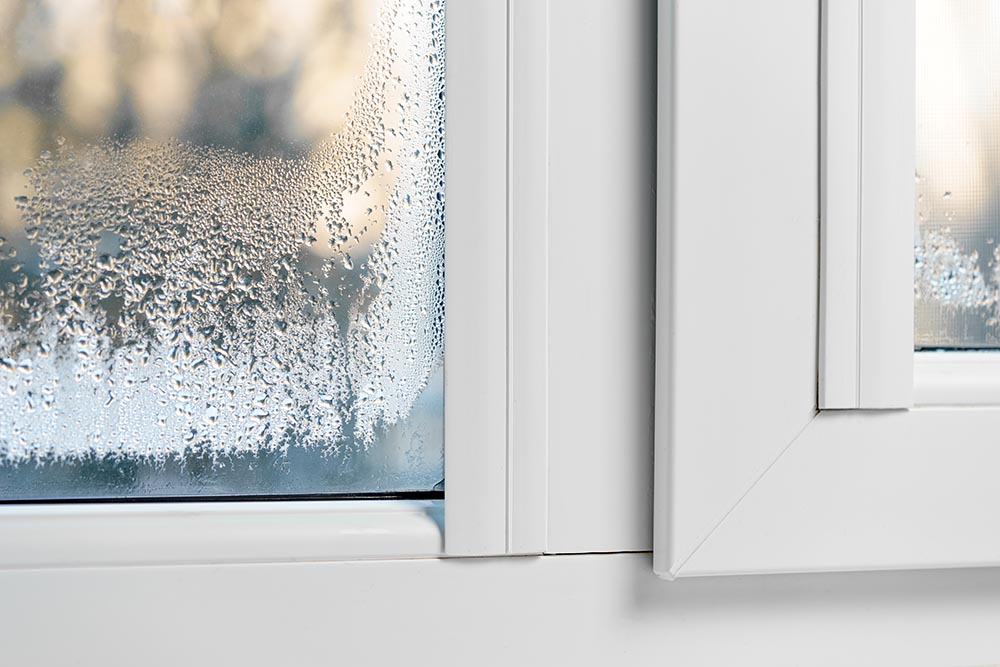It never fails. Every year, the weather changes, and before you know it, there are beads of moisture running down your windows. As a homeowner, it’s easy to become nervous about the quality and effectiveness of the windows. After all, windows are an important aspect of the home’s construction and greatly impact their performance and overall value.
Despite how irritating condensation can be, it can be a sign that your windows are performing as they should. However, this isn’t always the case—especially when the moisture is found trapped inside the windowpanes. That said, it is always a good idea to perform an inspection to ensure your window condensation isn’t a problem. Before we go over what to do about your window condensation issue, we will first need to figure out why condensation occurs in the first place—and whether it needs your attention. Take a look at the following information from our team at Smart Exteriors and learn how to deal with this common issue affecting windows from water damage caused by condensation.
Why Condensation Occurs
When condensation appears on the inside of the windows, it’s a sign of excessive moisture in the house. This usually happens in the winter when the warm air of the house clashes with the cold windows. Condensation that appears on the outside is just morning dew that shows up when the window is colder than the dew point.
However, there is one type of condensation that is never a good sign. When condensation ends up between the windowpanes, it means that either the seal between the panes is compromised or the desiccant inside is saturated.
Condensation and its Problems
The good news is that moisture buildup isn’t a large problem by itself. However, like most things, problems can develop if left untreated. Some of the most common problems associated with excessive moisture and condensation is mold, mildew, and water damage. For this reason, it’s important to determine the source of the condensation promptly. Some things you can do for this include:
- Carefully evaluate the condensation: It’s all about where the condensation appears on the window. The source of the condensation will determine your next course of action. Outside equals nothing needed, inside equals investigating the humidity source, and between the panes means a likely repair or possible window replacement.
- Weatherize the windows: The key to preventing condensation begins with proper insulation. Older windows may not perform as well during temperature changes. For this reason, it may be worth considering adding a storm window and weather stripping if you’re not in a position to buy new windows right now.
If you already have new windows or live in a home younger than 10 years old, then it’ll take a little more digging to figure out why condensation is appearing on your windows. The reason for this is because modern homes come packed with energy-efficient doors and windows designed to significantly reduce heat loss. However, you should crack your window open even in winter for a little bit just to give them a break in their performance.
With that being said, there is one situation in which the condensation source doesn’t matter because the priority becomes fixing the window. No matter if it’s fogging, condensing, or pooling water between the panes, the result is the same. The product is failing. Maybe the initial condensation will dry out and things go back to normal. That possibility won’t last forever since the window is failing more and more every day.
The reason for this is because double-paned windows are sealed to optimize insulation. Once that seal is compromised the window’s ability to insulate is compromised as well. Windows are only as good as the sum of its parts. While the loss of insulation is the most obvious symptom, you can also suffer from drafts and increased energy bills. For this reason, it’s critical to act quickly in determining a solution.
Is it Time for Replacement Windows?
As we mentioned, the seals are failing when condensation ends up between the panes if they haven’t already. However, there is a protocol to follow so you can be sure you get back to properly functioning windows as quickly as possible.
The first thing you should do is clean the windows. We recommend doing both the outside and inside of your window when performing this task. The reason for this is because that haziness or fogging could be condensation. It could also be a buildup of something such as a cleaning product or grease depending on what type of window is compromised.
If you have verified it is condensation between those panes, then the next step is to see if you can get away with replacing the window panes instead of the whole window. If possible, it’s simpler and less expensive. Keep in mind that factors such as window type, window age, and the manufacturer of the original window will affect how easily you can secure a replacement pane.
In some cases, replacing the panes by themselves isn’t a possibility. As such, you’ll have to invest in replacement windows. The older your window, the more it’s recommended to replace your windows as soon as possible. Strides are being made every year to further improve upon window technology so there’s no good reason to wait if your current windows are already failing.
Moving Forward With New Windows
If your windows are unable to be prepared, having them replaced is the next step. Window replacement is a home improvement decision that effectively resolves the issue of shoddy windows and should make condensation problems, poor insulation, and energy performance, and other important issues. However, deciding on new windows can seem overwhelming for some. That said, there are some things to keep in mind when planning to install replacement windows that will make the project easier, more affordable, and overall, a more positive experience.
Don’t DIY: It may be tempting to save money by installing the windows yourself. However, the main reason why window seals fail is because of improper installation. Don’t take the risk of ending up with the same problem you wanted to fix.
Check the warranty: All professional window contractors should offer protective warranties in the event something goes wrong with the window or the installation. Make sure the warranties provide what you need.
Do multiple windows: Yes you could just replace the one compromised window if it’s recent enough. However, one failing window is a good sign that the others will follow suit at some point.
Ultimately, as long as you work with a qualified window contractor that can walk you through the entire process, you’ll end up with windows that perform as they should. In Kansas City and the surrounding areas, Smart Exteriors is your best option for high-quality window products and top-rated installations. If you’re ready to check out your window options, then give us a call or fill out our online form to schedule a free estimate.

